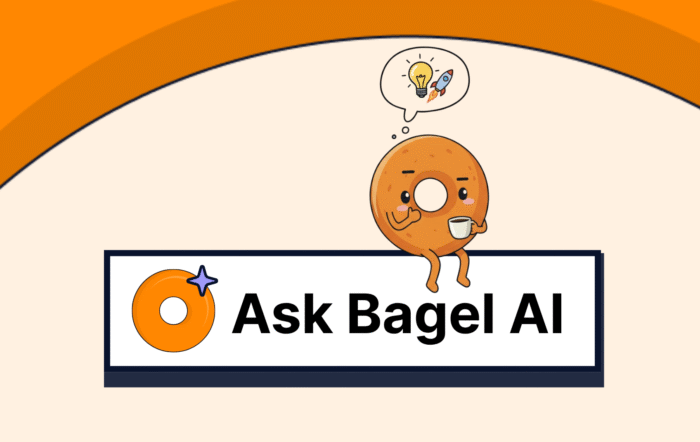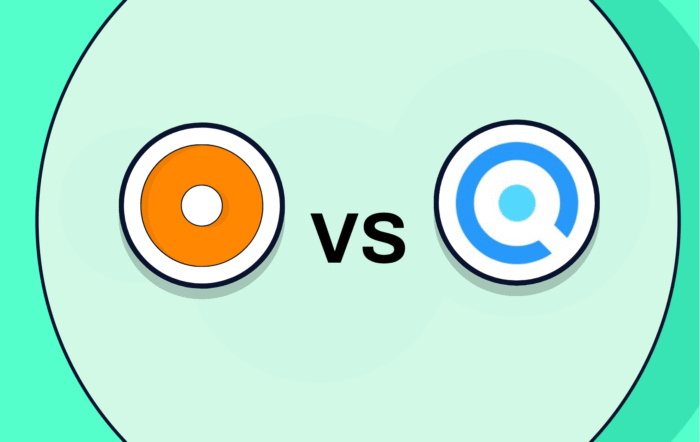Every product leader knows the challenge: feedback is everywhere, but decisions are bottlenecked.
Sales logs feedback in Salesforce.
Customer success has it buried in Zendesk tickets.
User research has interview notes in Notion.
Support lives in Slack threads.
In this chaos, two platforms stand out: Pendo Listen and Bagel AI.
Both claim to help you capture and organize customer feedback, but only one is built to turn that feedback into revenue-ready product decisions without manual busywork.
Let’s compare Pendo Listen vs Bagel AI (and show why Bagel AI is the top-rated Pendo Listen alternative), evaluate their strengths and weaknesses, and help you decide which tool actually solves your product team’s real problems.
Switch to Bagel AI
The Feedback Problem Product Teams Face
Before diving into features, let’s align on the pain points most product organizations experience:
- Feedback is fragmented across multiple channels and tools.
- Manual tagging and categorization consumes hours every week.
- Prioritization is guesswork, often based on anecdotal input or vote counts.
- No link to business impact, making it hard to defend roadmap decisions to leadership.
- Different request types need different handling, but most tools lump bugs, deal blockers, and feature requests together.
- Delayed GTM alignment, causing sales and CS teams to operate on outdated information.
A modern solution should solve all of these while reducing workload, not just make the data prettier.
Pendo Listen: Strengths & Weaknesses
Pendo Listen is an add-on module within Pendo’s product experience platform. It allows you to collect, centralize, and analyze customer feedback.
Strengths:
- Native to Pendo: Fits seamlessly if you are already using Pendo for analytics and in-app guidance.
- Multiple capture channels: In-app feedback widgets, Salesforce, Zendesk, CSV imports.
- AI summarization: Groups similar feedback themes for quick review.
- Idea validation: In-app polls to gauge user sentiment before committing resources.
Weaknesses:
- No direct revenue linkage: Feedback themes are not tied to churn risk, ARR impact, or expansion opportunities.
- AI stops at summaries: No automated prioritization based on business context.
- Siloed from GTM tools: Sales and CS teams do not see real-time product updates inside their daily workflow tools.
- Manual tagging overhead: Still requires ongoing admin effort to maintain clean categories.
- Treats all requests equally: Does not distinguish between deal blockers, commitments, or nice-to-have suggestions.
- Limited cross-functional workflow: Primarily serves PM needs, not the broader revenue org.
Bagel AI: Strengths & Weaknesses
Bagel AI is designed as a feedback-to-decision engine, not just a listening post.
Strengths:
- Revenue-linked prioritization: Every piece of feedback is tied to metrics like ARR, churn, upsell potential.
- True AI automation: Auto-tags, clusters, and prioritizes based on urgency and business value with zero manual sorting.
- Context-aware workflows: Treats deal blockers, customer commitments, bugs, and feature requests differently so critical issues get prioritized over noise.
- Deep GTM integration: Syncs with Salesforce, Gong, Zendesk, Intercom, Jira in real time.
- Real-time roadmap updates: Product changes automatically pushed to GTM teams inside their tools.
- Monetization insights: Identifies upsell drivers and revenue blockers from customer input.
- Minimal setup: Learns your product taxonomy automatically.
Weaknesses:
- Requires commitment to integrated workflows. If you are only looking to collect feedback passively, Bagel AI may be more than you need.
Feature-by-Feature Comparison
| Capability | Bagel AI | Pendo Listen |
|---|---|---|
| Feedback capture | Multi-channel (Salesforce, Gong, Zendesk, Intercom, Jira, Slack, APIs) | In-app, Salesforce, Zendesk, CSV |
| Revenue impact mapping | ✅ Directly ties feedback to ARR, churn risk, upsell potential | ❌ Not available |
| AI automation | ✅ Auto-tag, cluster, and prioritize with GTM context | ⚠️ Summarization only |
| Complex request workflows | ✅ Distinguishes and routes deal blockers, customer commitments, bugs, and feature requests with tailored logic | ❌ Treats all feedback uniformly |
| GTM team alignment | ✅ Live updates inside CRM, CS tools, Slack | ❌ Not native |
| Roadmap integration | ✅ Real-time Jira + GTM sync | ⚠️ Jira, Azure DevOps (no GTM sync) |
| Setup & maintenance | ✅ Learns taxonomy automatically | ❌ Manual upkeep |
| Monetization insights | ✅ Identifies upsell opportunities | ❌ Not available |
Real-World Example
Scenario: Your sales team loses a $200k renewal because a competitor offers a feature prospects keep requesting.
- With Pendo Listen: The request is logged, summarized, and visible in the feedback hub, but your team still has to tag it manually, link it to churn data, and prioritize it against other initiatives. All requests look the same.
- With Bagel AI: The request is automatically flagged as a deal blocker tied to a live renewal, linked to the account in Salesforce, surfaced to PMs with ARR context, and added to the roadmap discussion in real time before the renewal is lost.
Who Should Choose Which?
Choose Pendo Listen if:
- You already use Pendo extensively and want to centralize feedback within the same platform.
- Your priority is thematic analysis over direct revenue mapping.
- Your team is comfortable with manual triage and prioritization.
Choose Bagel AI if:
- You want zero manual tagging of feedback.
- You need real-time revenue context to prioritize work.
- You want sales, CS, and PM working from the same live source of truth.
- You want complex feedback types like commitments and deal blockers handled with the right urgency.
- You want to move from feedback to action in minutes, not weeks.
Choosing the Right Alternative
If you are searching for the best Pendo Listen alternative in 2025, the question is not which tool listens better. It is which tool acts faster and smarter.
Pendo Listen centralizes and summarizes.
Bagel AI quantifies, prioritizes, and applies tailored workflows to deal blockers, commitments, and growth drivers so you always know what matters most for revenue.
For companies serious about closing the gap between customer feedback and business results, Bagel AI is the logical next step.



